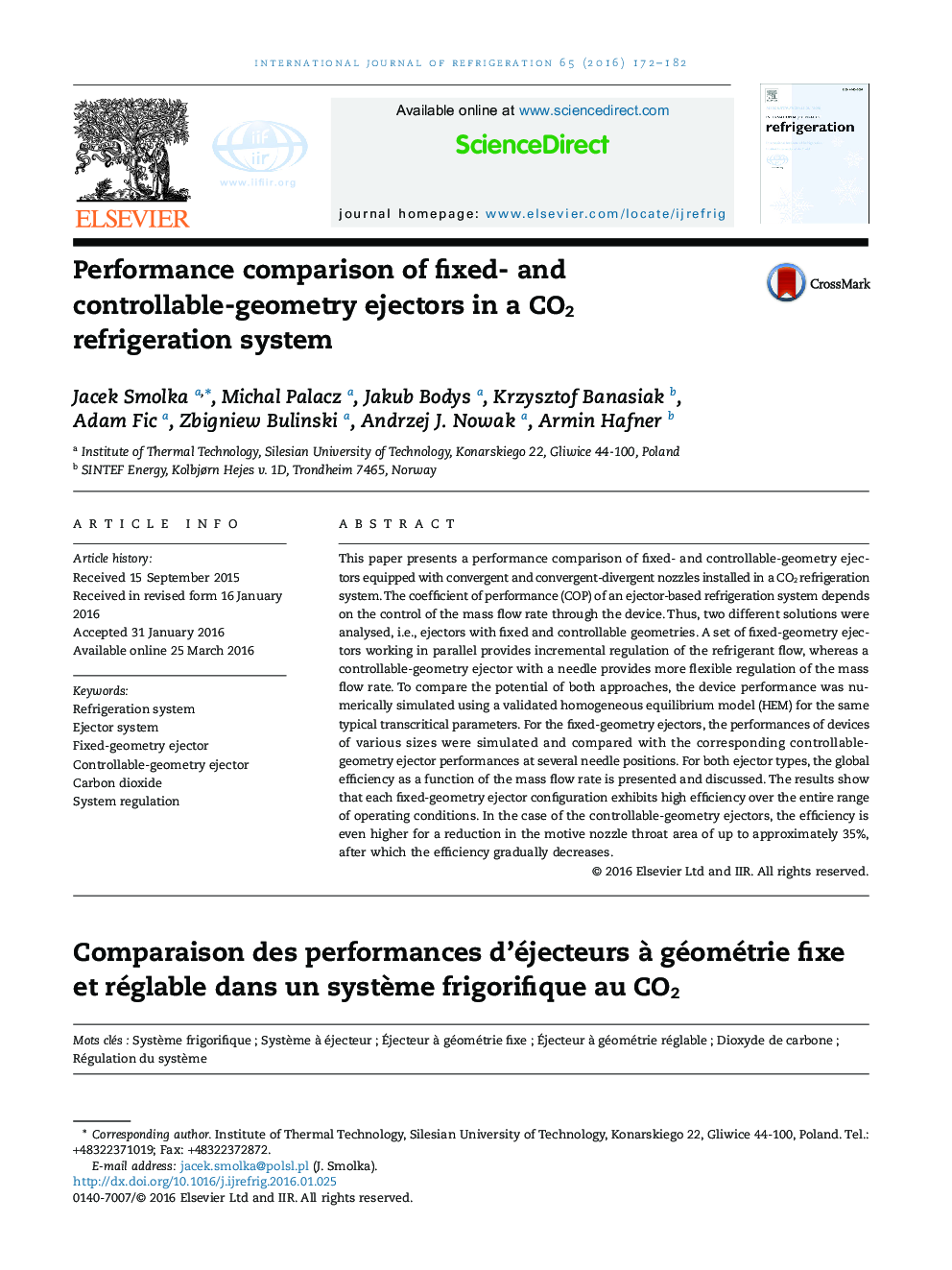| Article ID | Journal | Published Year | Pages | File Type |
|---|---|---|---|---|
| 786727 | International Journal of Refrigeration | 2016 | 11 Pages |
•The fixed ejector offers high efficiency for all the considered operating conditions.•The fixed ejector efficiency is practically independent on the ejector size.•It is difficult to determine optimal needle position of the controllable ejector.•The controllable ejector offers high efficiency for a low-reduced motive flow.•The controllable ejector offers low efficiency for a highly reduced motive flow.
This paper presents a performance comparison of fixed- and controllable-geometry ejectors equipped with convergent and convergent-divergent nozzles installed in a CO2 refrigeration system. The coefficient of performance (COP) of an ejector-based refrigeration system depends on the control of the mass flow rate through the device. Thus, two different solutions were analysed, i.e., ejectors with fixed and controllable geometries. A set of fixed-geometry ejectors working in parallel provides incremental regulation of the refrigerant flow, whereas a controllable-geometry ejector with a needle provides more flexible regulation of the mass flow rate. To compare the potential of both approaches, the device performance was numerically simulated using a validated homogeneous equilibrium model (HEM) for the same typical transcritical parameters. For the fixed-geometry ejectors, the performances of devices of various sizes were simulated and compared with the corresponding controllable-geometry ejector performances at several needle positions. For both ejector types, the global efficiency as a function of the mass flow rate is presented and discussed. The results show that each fixed-geometry ejector configuration exhibits high efficiency over the entire range of operating conditions. In the case of the controllable-geometry ejectors, the efficiency is even higher for a reduction in the motive nozzle throat area of up to approximately 35%, after which the efficiency gradually decreases.
